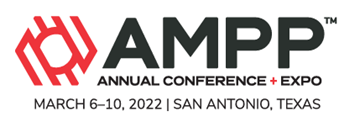Search
Conference Papers
View as
Sort by
Display
per page
The Need For Independent 3Rd Party Coatings Inspectors On All Industrial Coatings Projects
Product Number:
51322-18101-SG
Publication Date:
2022
$20.00
The NEPCOAT Story- Bridge Paint Selection In The North East
Product Number:
51322-17834-SG
Publication Date:
2022
$20.00
The New Concept of Failure of Thin Organic Films by a Combination of Optical Shearography and EIS
Product Number:
51313-02028-SG
ISBN:
02028 2013 CP
Publication Date:
2013
$20.00
The Next Generation of Double Bottom Tank Cathodic Protection
Product Number:
51319-12924-SG
Publication Date:
2019
$20.00
The Next Generation of High Build Alphatic Moisture Cure Coatings
Product Number:
41210-561-SG
Publication Date:
2010
$20.00
The Next Step in Solar Reflectance Testing for Roofing Products
Product Number:
41213-763-SG
Publication Date:
2013
$20.00
The Optimized Inspection Approaches of PSA Adsorber Weldment Integrity with the Buried Cracks
Product Number:
51324-20689-SG
Publication Date:
2024
$40.00
The Overview of Scale Inhibitor Residual Detection Methods for Both Downstream and Upstream Applications
Product Number:
51321-16280-SG
Publication Date:
2021
$20.00
The Path towards More Consistent Evaluation of Corrosion Inhibitors Used in the Oil and Gas Industry
Product Number:
51324-20702-SG
Publication Date:
2024
$40.00
The Path Towards More Consistent Evaluation of Corrosion Inhibitors Used in the Oil and Gas Industry
Product Number:
MECC23-20250-SG
Publication Date:
2023
$20.00














